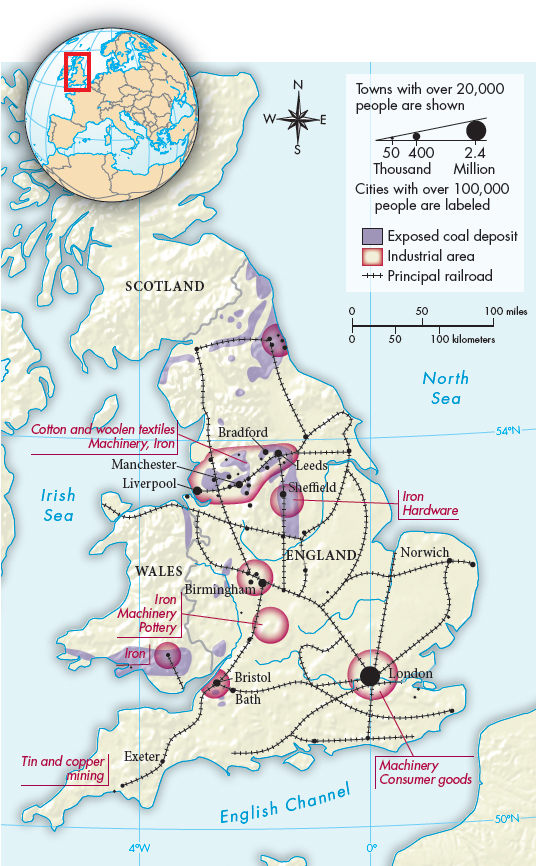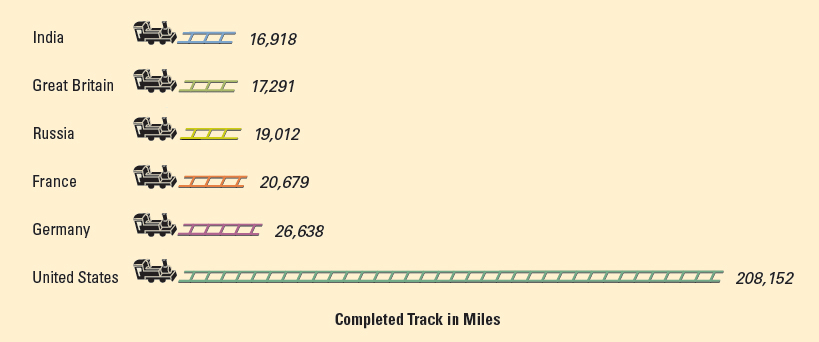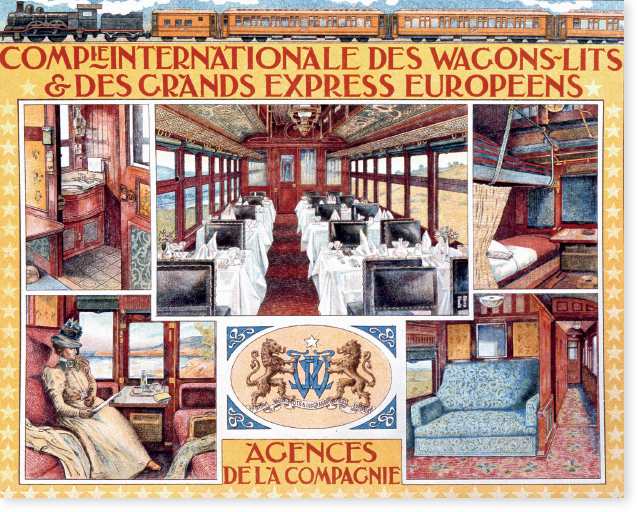Understanding World Societies:
Printed Page 688
Steam-Powered Transportation

The first steam locomotive was built by Richard Trevithick after much experimentation. George Stephenson’s locomotive named Rocket sped down the track of the just-
The arrival of the railroad had many significant consequences. It dramatically reduced the cost and uncertainty of shipping freight over land. Previously, markets had tended to be small and local; as the barrier of high transportation costs was lowered, markets became larger and even nationwide. Larger markets encouraged larger factories with more sophisticated machinery in a growing number of industries. Such factories could make goods more cheaply and gradually subjected most cottage workers and many urban artisans to severe competitive pressures. In all countries, the construction of railroads created a strong demand for unskilled labor and contributed to the growth of a class of urban workers.
The railroad also had a tremendous impact on cultural values and attitudes. The last and culminating invention of the Industrial Revolution, the railroad dramatically revealed the power and increased the speed of the new age. Some great painters, notably Joseph M. W. Turner (1775–
The steam engine also transformed water travel. French engineers completed the first steamships in the 1770s, and the first commercial steamships came into use in North America several decades later. The steamship brought the advantages of the railroad — speed, reliability, efficiency — to water travel.

Steam railroads were first used by the general public for shipping in England in the 1820s, and they quickly spread to other countries. The United States was an early adopter of railroads and by 1890 had surpassed all other countries in miles of track, as shown in this figure.

The International Sleeping-